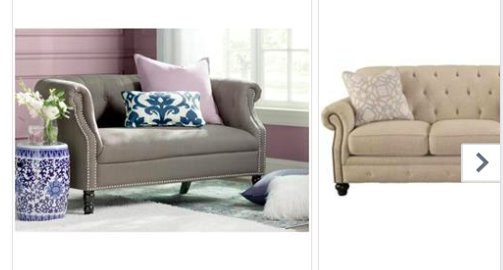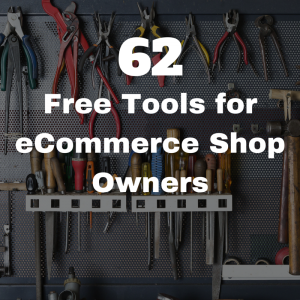— July 24, 2017
If you’ve visited the Seven Atoms blog before, you’re probably already aware that we’re huge fans of Facebook advertising—especially when it comes to ecommerce. If you don’t share that enthusiasm, we’ve got some news for you: you’re doing it wrong.
Facebook campaigns for ecommerce can be incredibly lucrative, but they can also be a real budget burner. Many a marketer will focus on one or a few of the more big picture elements of Facebook ads and lay to waste the important, finite details

But don’t despair—SevenAtoms is here to save the day… er, at least your ad budget. Ready? That’s the spirit!
1. Choose the Right Audience Type
If you’re not already aware, Facebook has three audience types for you to choose from. BUT, it’s not just a smorgasbord for you to pick and choose from at random. The type of audiences you create will depend on the products your selling and the kind of campaign you want to run. Allow me to explain by detailing the three audience types…
- Custom Audiences – These audiences allow you to create audiences of people who already have some knowledge or interest in your product. You can create a custom audience based on users’ URL history on your site, a list of subscribers that you upload to the platform, or by users’ activity with your app or your Facebook posts. Because all of these scenarios will leave you with a list of prospects who already have some level of interest in your brand, you should use this type of audience for retargeting campaigns only. The one exception to this rule is if you want to use your custom audience to create a lookalike audience—but we’ll get to that later.
- Saved Audiences – If you’re targeting fresh meat, this is the audience type for you. Saved audiences allow you to target Facebook users based on certain demographics, behaviors, and interests. So, if you’re selling cruelty-free tofu, you could target vegetarian animal activists with an interest in tofu. Yes, it’s that specific. To make sure that you choose the right targeting options, you should first create a buyer persona for your ideal customer. This will help you decide which details are most important to include (or exclude) so that you can make your audience as refined as possible.
Many ecommerce marketers make the mistake of creating audiences comprised of millions of users. The bigger your audience the more potential for sales, right? Wrong. The beauty of digital advertising is that it’s not a billboard on the highway—you have control over who sees it, so use that to your advantage. Remember, the goal is not to reach as many people as possible but rather to reach as many relevant people as possible. There’s no sense in paying to advertise to people who won’t buy your product.
One more tip before we move on: be sure to exclude your corresponding retargeting audience from your saved audiences.
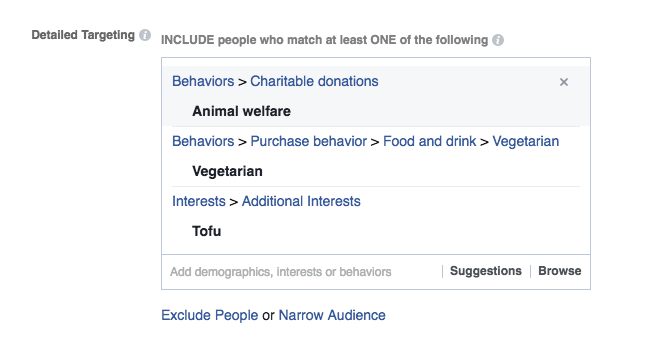
- Lookalike Audiences – And last but not least, we have the lookalike audience. This type of audience should also be used when targeting to new consumers who not visited your site. However, unlike saved audiences, you don’t have to pick out the demographics, behaviors, and interests yourself. Instead, you can have Facebook use one of your custom audiences to generate a group of similar users who are most likely to show an interest in your brand. For ecommerce companies that don’t have enough data or research available to create an accurate buyer persona, lookalike audiences can be an excellent bandaid.
2. Eliminate the Purely Curious
If you have an interesting but ambiguous ad image and ad copy, you may get a lot of curious but ultimately uninterested users to click on your ad. Instead of paying for these irrelevant clicks, you should alter your ecommerce ads so that they only appeal to those who are likely to purchase your product.
For example, you may want to include the price of the item somewhere in your ad image or copy. This way, you can eliminate clicks from people who like the product but don’t have the cash. Or, if you only carry clothes up to a size 10, mention that in the copy. For example, “Save 10% now through Friday on Women’s Dresses sizes 4 to 10.”
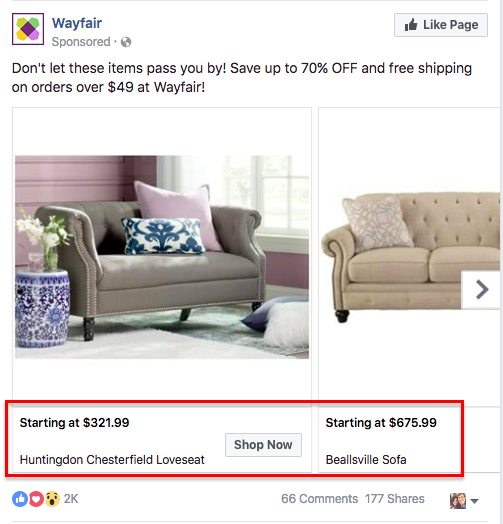
3. Spice Up the Offer and Use FOMO to Your Advantage
Remember, consumers in your retargeting audience have already poked around your site or maybe they even added something to their cart. The hurdle here is not to get them interested in your product and your brand, but to give them a better reason to buy. Many times, a special offer is the push they need to convert. Try offering coupon codes or other promotions to sweeten the deal.
Another good way to get people to convert is to add a sense of urgency to your Facebook ads. If people think they have all the time in the world to use that special promo code, they’ll probably take their time (and ultimately forget about the offer or find something else). Use language that will spark consumers’ FOMO (Fear of Missing Out). For example, phrases like “Last chance,” “Hurry!” and “Today only,” can inspire users to whip out their credit cards before the offer fades into the sunset. Remember, your offer doesn’t actually have to expire that day. Just make sure you exclude converted customers from your audience so no one feels bamboozled.
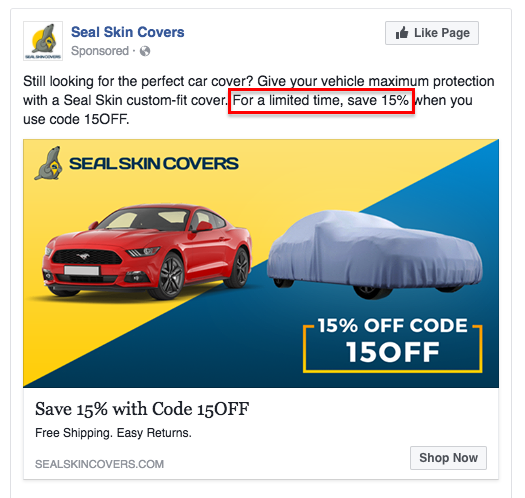
4. Step Up Your Ad Game
And finally, make sure your ads appeal to your corresponding audience. Because the newsfeed background is white, ads that lack color will be largely ignored by consumers. Instead, use bright, compelling images that capture the eye. When possible, stick to your brand theme and colors for consistency. You want your ads to help consumers start to recognize your brand.
The biggest problem that ecommerce marketers make when designing Facebook ads is that they use one generic ad for all their audiences. This is a big no-no, and it could be the reason you’re not seeing positive results from your campaigns. Whenever you create a new ad, you must always think about who will be viewing it. This is true both for design and copy. For example, someone who has never heard of your product or even a product like it will need an ad that offers much more detail. You’ll need to clearly explain what you’re selling and include an image that accurately portrays the product. Conversely, retargeting ads are for people who already have a knowledge of your product and brand. For these ads, focus on why your product is better than competitors’ and offer added incentive (such as a promo code).
Digital & Social Articles on Business 2 Community
(59)
